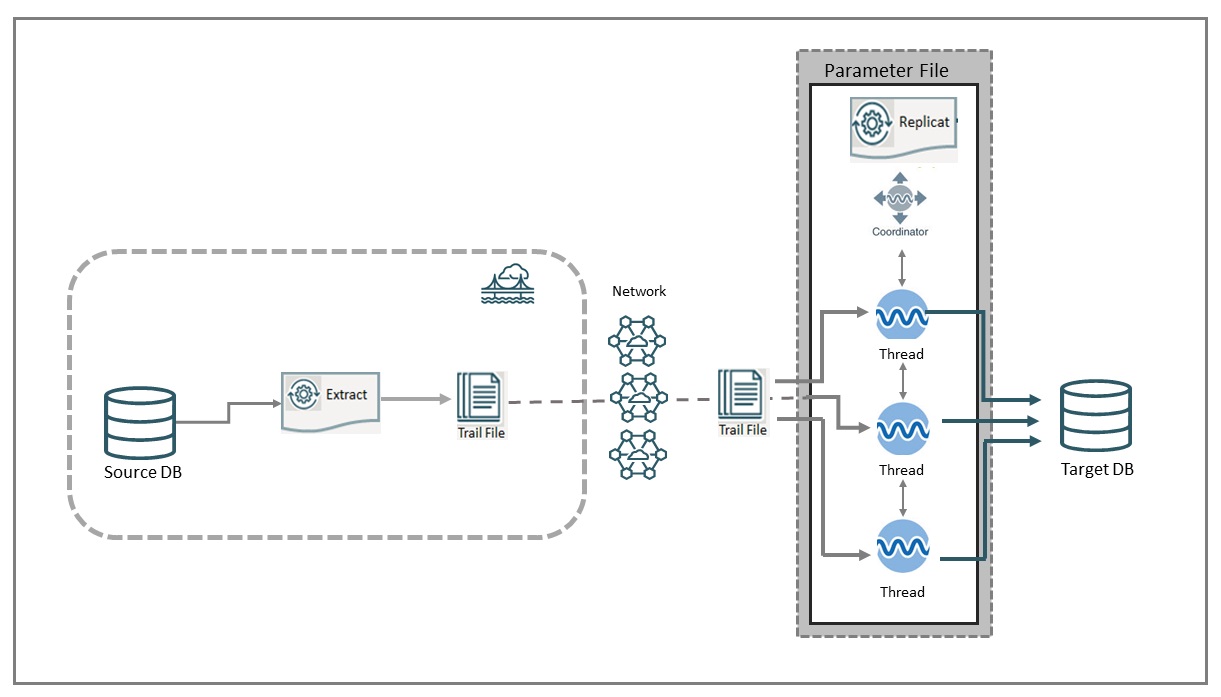About Coordinated Replicat
In coordinated mode, Replicat operates as follows:
- Reads the Oracle GoldenGate trail.
- Performs data filtering, mapping, and conversion.
- Performs data filtering, mapping, and conversion.
- Applies the SQL to the target through the SQL interface that is supported for the given target database, such as ODBC or the native database interface.
The difference between classic mode and coordinated mode is that Replicat is multi-threaded in coordinated mode. Within a single Replicat instance, multiple threads read the trail independently and apply transactions in parallel. Each thread handles the filtering, mapping, conversion, SQL construction, and error handling for its assigned workload. A coordinator thread coordinates the transactions across threads to account for dependencies among the threads.
The source transactions could be split across CR processes such that the integrity of the total source transaction is not maintained. The portion of the transaction processed by a CR process is done in committed order but the whole transaction across all CR processes is not.
Coordinated Replicat allows for user-defined partitioning of the workload so as to apply high volume transactions concurrently. In addition, it automatically coordinates the execution of transactions that require coordination, such as DDL, and primary key updates with THREADRANGE partitioning. Such a transaction is executed as one transaction in the target with full synchronization: it waits until all prior transactions are applied first, and all transactions after this barrier transaction have to wait until this barrier transaction is applied.
Only one parameter file is required for a coordinated Replicat, regardless of the number of threads. You use the THREAD or THREADRANGE option in the MAP statement to specify which threads process the transactions for those objects, and you specify the maximum number of threads when you create the Replicat group.
This figure illustrates the architecture of Coordinated Replicat.
As shown in this figure, the Coordinated Replicat includes the following two processes:
